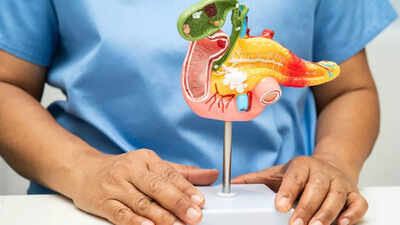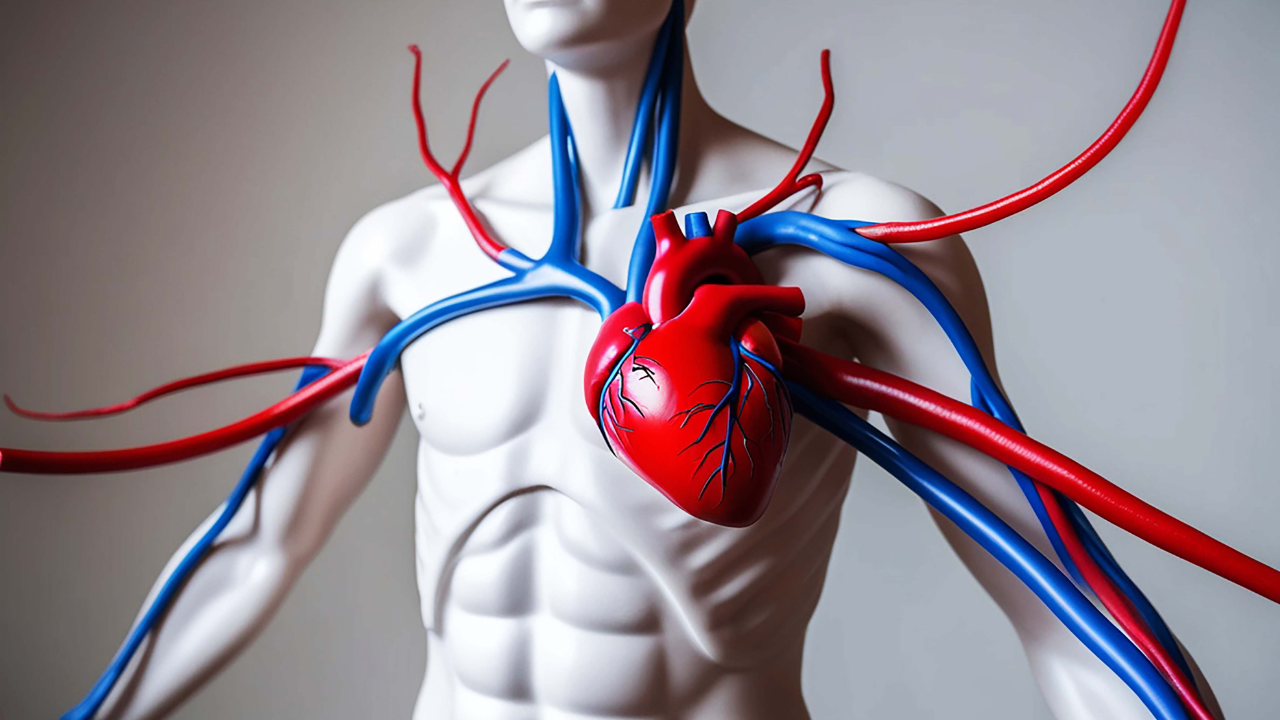5 warning signs your pancreas isn’t working properly: Causes and prevention tips explained |

The pancreas is a vital but often overlooked organ that plays a key role in digestion and blood sugar regulation. It produces essential enzymes that break down food and hormones like insulin and glucagon that maintain energy balance. When the pancreas starts to malfunction, it can lead to serious conditions such as pancreatitis, diabetes, or even pancreatic cancer. Early warning signs like persistent abdominal pain, nausea, or unexplained weight loss should never be ignored. Recognising these symptoms early allows for timely medical intervention, which can prevent long-term complications and preserve overall health. Taking proactive steps through a balanced diet, limited alcohol consumption, and regular check-ups is crucial for maintaining a healthy, well-functioning pancreas.
Understanding the role of the pancreas
The pancreas is located behind the stomach and performs two key functions: digestive and endocrine. It releases digestive enzymes into the small intestine to help break down fats, carbohydrates, and proteins. It also produces hormones such as insulin and glucagon that regulate blood sugar levels. When either of these functions is disrupted, the effects can spread throughout the body, affecting energy levels, digestion, and overall health.The article titled “Symptoms, burden, and unmet needs of patients living with exocrine pancreatic insufficiency: a narrative review of the patient experience” in PubMed examines how exocrine pancreatic insufficiency (EPI) resulting from a deficiency in pancreatic digestive enzymes significantly impacts patients’ lives. The review highlights key symptoms such as abdominal pain and maldigestion, explores how these affect quality of life, and identifies major gaps in research on long-term impacts and emotional functioning.
5 early signs your pancreas might be damaged
- Persistent abdominal pain that radiates to the back
One of the most common indicators of a pancreatic problem is persistent or severe abdominal pain, especially in the upper abdomen. The pain may worsen after eating or drinking, particularly after consuming fatty foods, and can radiate to the back. This is a hallmark symptom of pancreatitis, which is inflammation of the pancreas.If left untreated, acute inflammation can become chronic, leading to scarring and long-term damage. According to the reports, recurring abdominal pain that intensifies after meals should not be ignored, as it could signal a serious pancreatic condition that requires medical attention.
- Unexplained weight loss and fatty stools
A malfunctioning pancreas may fail to release enough digestive enzymes, preventing the body from properly absorbing nutrients. This can result in unexplained weight loss, diarrhoea, and pale, greasy, or foul-smelling stools, known as steatorrhoea. These symptoms indicate the body is not digesting fats effectively.Over time, poor nutrient absorption can lead to fatigue, weakness, and deficiencies in essential vitamins. If you are losing weight without trying or notice changes in your stool, it may be a sign that your pancreas is struggling to perform its digestive role.
- Nausea, vomiting, and digestive discomfort
Chronic nausea, bloating, and vomiting can also suggest pancreatic distress. Since the pancreas plays a major role in digestion, any dysfunction can slow or disrupt the digestive process, causing a feeling of heaviness or fullness even after small meals. These symptoms are often mistaken for acid reflux or gastritis, which can delay proper diagnosis and treatment.Persistent digestive discomfort, particularly when combined with other symptoms such as weight loss or back pain, should prompt further medical evaluation to rule out underlying pancreatic issues.
- Blood sugar imbalance and fatigue
When the pancreas is unable to produce enough insulin, blood sugar levels become unstable. This may cause constant fatigue, thirst, increased urination, or sudden drops in energy. Over time, pancreatic dysfunction can lead to diabetes.The National Institute of Diabetes and Digestive and Kidney Diseases notes that diseases affecting the pancreas can disrupt insulin production, causing both high and low blood sugar episodes. Monitoring glucose levels and recognising these early signs can help prevent long-term metabolic complications.
- Jaundice or yellowing of the skin and eyes
A sudden yellowish tint in the skin or eyes, known as jaundice, can be an alarming sign of a pancreatic blockage or, in more serious cases, pancreatic cancer. When the pancreas or bile duct becomes obstructed, bilirubin, a yellow pigment, builds up in the bloodstream. Jaundice may also be accompanied by dark urine, pale stools, and itchy skin, all of which require immediate medical attention.Jaundice should never be ignored, as it can indicate that the bile flow from the liver to the intestine is blocked, potentially by a tumour or inflammation in the pancreas.
Causes of pancreatic problems
- Heavy alcohol consumption – Long-term drinking irritates and inflames the pancreas, leading to acute or chronic pancreatitis.
- Gallstones – These can block the pancreatic duct, causing painful inflammation and digestive issues.
- High triglyceride levels – Excess fat in the blood can trigger inflammation in pancreatic tissues.
- Smoking – Increases the risk of pancreatic cancer and weakens the pancreas’s ability to function properly.
- Genetic factors – A family history of pancreatitis, cystic fibrosis, or other pancreatic diseases increases risk.
- Viral infections – Certain viral illnesses can inflame or damage the pancreas.
- Medications and toxins – Some drugs or environmental toxins can disrupt enzyme production or inflame pancreatic tissue.
- Poor diet – High intake of processed, fatty, or sugary foods can overwork the pancreas and impair insulin regulation.
Prevention tips for a healthy pancreas
- Limit alcohol intake – Avoid or minimise drinking to prevent inflammation and long-term pancreatic damage.
- Quit smoking – Stopping smoking significantly reduces the risk of pancreatic cancer and chronic disease.
- Eat a balanced diet – Focus on whole grains, fruits, vegetables, lean proteins, and healthy fats to support digestion.
- Avoid high-fat and processed foods – Reduce intake of fried, processed, and sugary items to ease the workload on your pancreas.
- Stay hydrated – Drink enough water daily to help enzyme function and flush out toxins.
- Exercise regularly – Helps regulate blood sugar, manage weight, and reduce triglyceride levels.
- Maintain a healthy weight – Prevents fat build-up around organs, lowering the risk of inflammation and insulin resistance.
- Monitor cholesterol and triglyceride levels – Regular check-ups can help detect and manage risk factors early.
- Manage blood sugar – If diabetic or prediabetic, keep glucose levels stable through diet and medication.
- Get regular medical screenings – Early detection of pancreatic or digestive issues can prevent severe complications.
Disclaimer: This article is for informational purposes only and should not be considered a substitute for professional medical advice, diagnosis, or treatment. If you experience any of the symptoms mentioned or suspect a problem with your pancreas, please consult a qualified healthcare professional for proper evaluation and guidance.Also Read | Understanding metastatic prostate cancer in men over 70: Know how to detect and modern treatment options that can extend life





